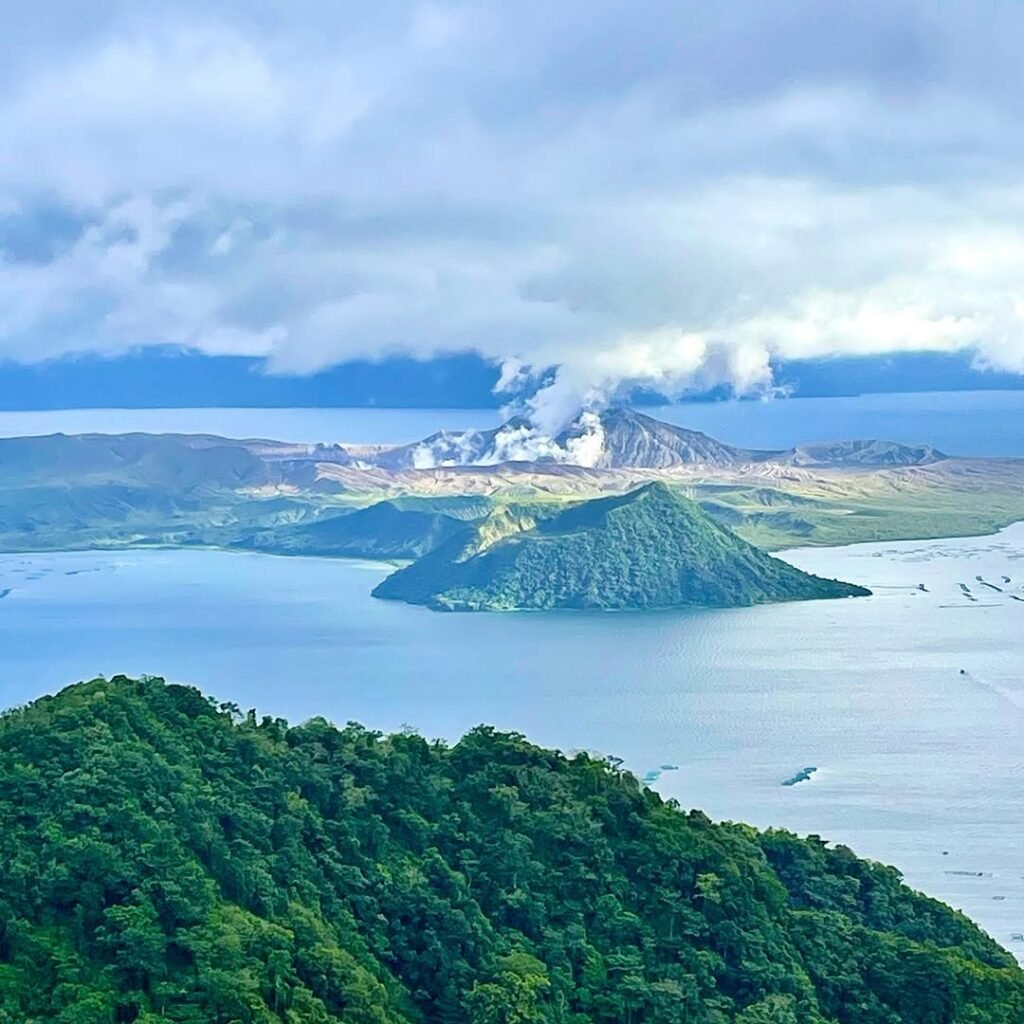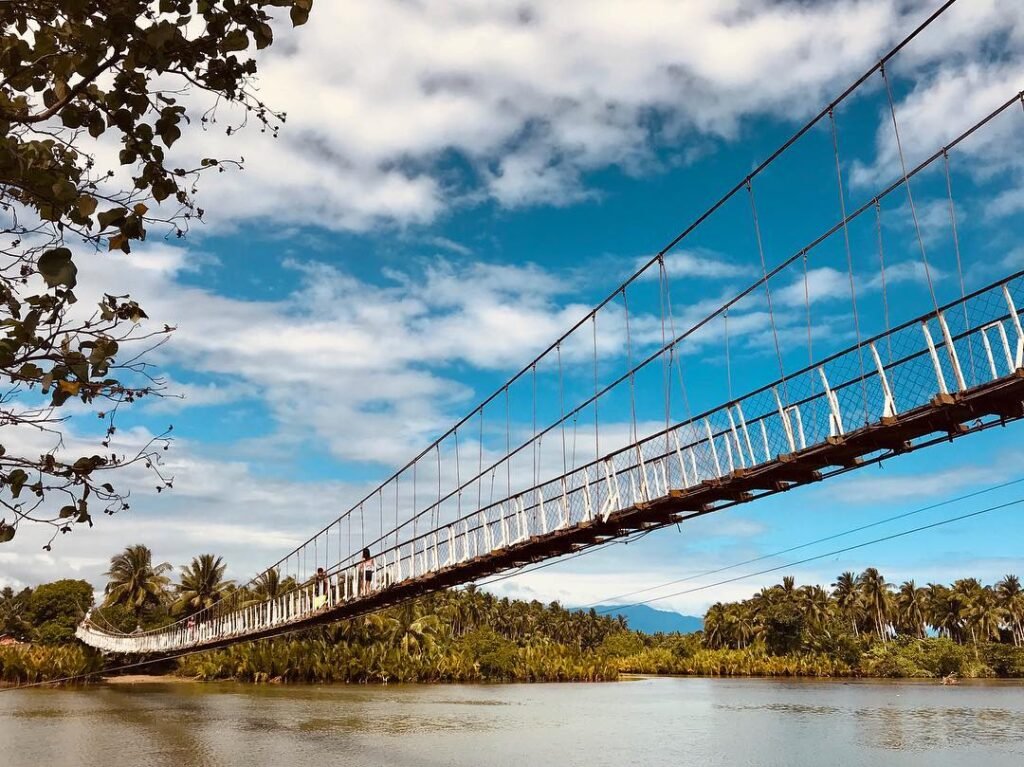Introduction: Exploring the Top 20 Tourist Destinations in the Philippines
The Philippines, an archipelago of more than 7,000 islands, is one of Asia’s most diverse and captivating travel hubs. From pristine beaches and dramatic mountains to centuries-old heritage towns and modern cities, the country offers a wide spectrum of experiences that appeal to every type of traveler. Whether you are a first-time visitor or a returning explorer, discovering the best tourist destination in the Philippines is always an exciting journey.
What makes the Philippines truly special is its balance of world-famous landmarks and hidden local gems. Everyone knows about Boracay’s White Beach or Palawan’s breathtaking lagoons, but beyond these are rice terraces carved 2,000 years ago, colonial cities frozen in time, and vibrant festivals that reveal the heart of Filipino culture. Each province holds a story—whether told through architecture, food, or nature—and together they weave the country’s identity as a must-visit Asian destination.
In this guide, I’ll take you through the top 20 tourist destination in the Philippines, curated for both local and international travelers. More than just a list, this article highlights why each spot is a must-visit, alongside practical travel tips such as the best time to go, how to get there, entrance fees, and insider hacks. This way, you’ll not only know where to go, but also how to maximize your trip while saving time and budget.
If you’ve ever wondered which Philippines tourist destination should be on your bucket list, this comprehensive guide brings together the most iconic, culturally rich, and adventure-filled places across Luzon, Visayas, and Mindanao. From heritage cities to tropical islands, get ready to uncover destinations that showcase the Philippines at its very best.
Table of Contents
II. Top 20 Tourist Destinations in the Philippines
20. Baguio – Summer Capital of the Philippines
Dubbed the “Summer Capital of the Philippines,” Baguio is a refreshing mountain retreat in Northern Luzon. With its cool climate, pine-covered hills, and vibrant culture, it has long been a beloved escape from Manila’s heat.
Highlights include Burnham Park, perfect for boating and biking; the scenic Strawberry Farm in La Trinidad; and bustling Session Road, lined with cafés and shops. The annual Panagbenga Festival in February transforms the city into a floral wonderland with street parades and floats covered in blooms.
Cultural stops like the Baguio Museum and Tam-awan Village showcase local art and Cordillera heritage, while food lovers can enjoy ube jams and local coffee.
Best Time to Visit: February for Panagbenga or March–May for the coolest weather.
How to Get There: Six-hour bus ride from Manila via North Luzon Expressway.
Fees: Most attractions are free or minimal (₱20–₱50).
As a Baguio tourist destination, it offers nature, culture, and festivities in one package. With its timeless charm, it continues to stand out as a tourist destination in Baguio and ranks proudly in the top 20 tourist destination in the Philippines.
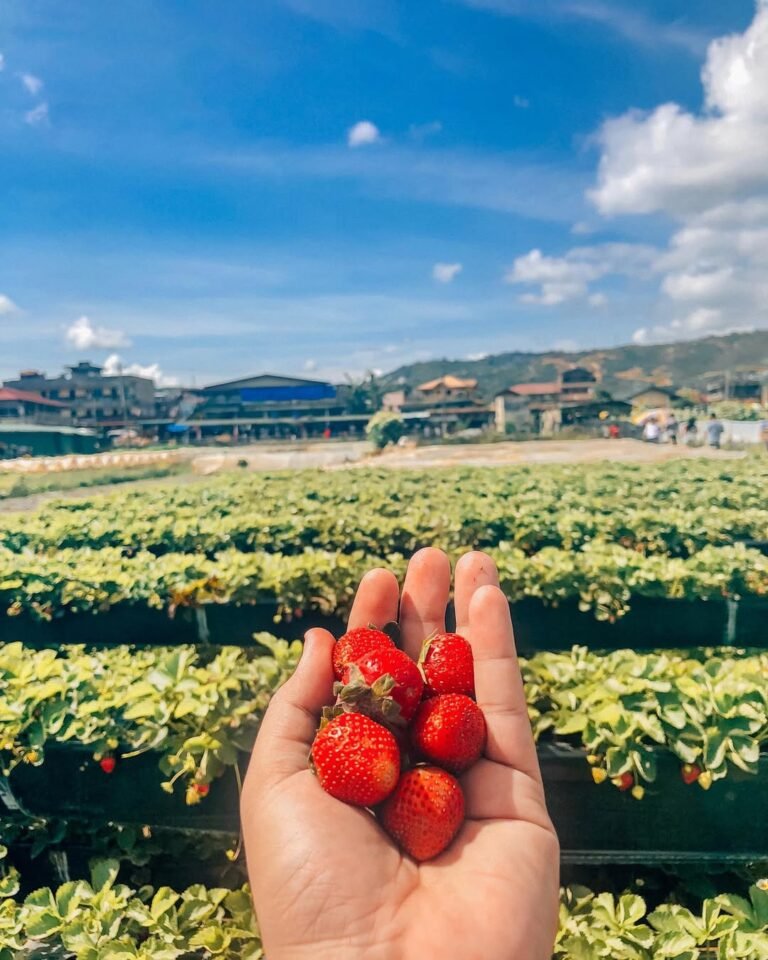
19. Batangas – Beaches & Taal Volcano
Close to Manila, Batangas is a favorite getaway offering beaches, diving, and cultural experiences. Anilao is globally renowned for scuba diving, with vibrant marine biodiversity ideal for underwater photography. For a more relaxed vibe, Laiya Beach in San Juan provides white sand shores perfect for families and couples.
Towering over Taal Lake is Taal Volcano, one of the world’s smallest active volcanoes, offering scenic hikes and boat tours. Meanwhile, history buffs can explore Taal Heritage Town, where ancestral homes and the Basilica of St. Martin de Tours showcase Spanish colonial grandeur.
Best Time to Visit: November–April for beach trips and dry hiking conditions.
How to Get There: A 2–3 hour drive south of Manila via SLEX or STAR Tollway. Boats from Talisay provide access to Taal Volcano.
Fees: Beach resorts range ₱100–₱300 day passes; Taal Volcano tours (~₱2,000–₱3,000).
A versatile Batangas tourist spot, it caters to divers, history lovers, and weekenders alike, making it one of the most accessible and diverse options in the top 20 tourist destination in the Philippines.
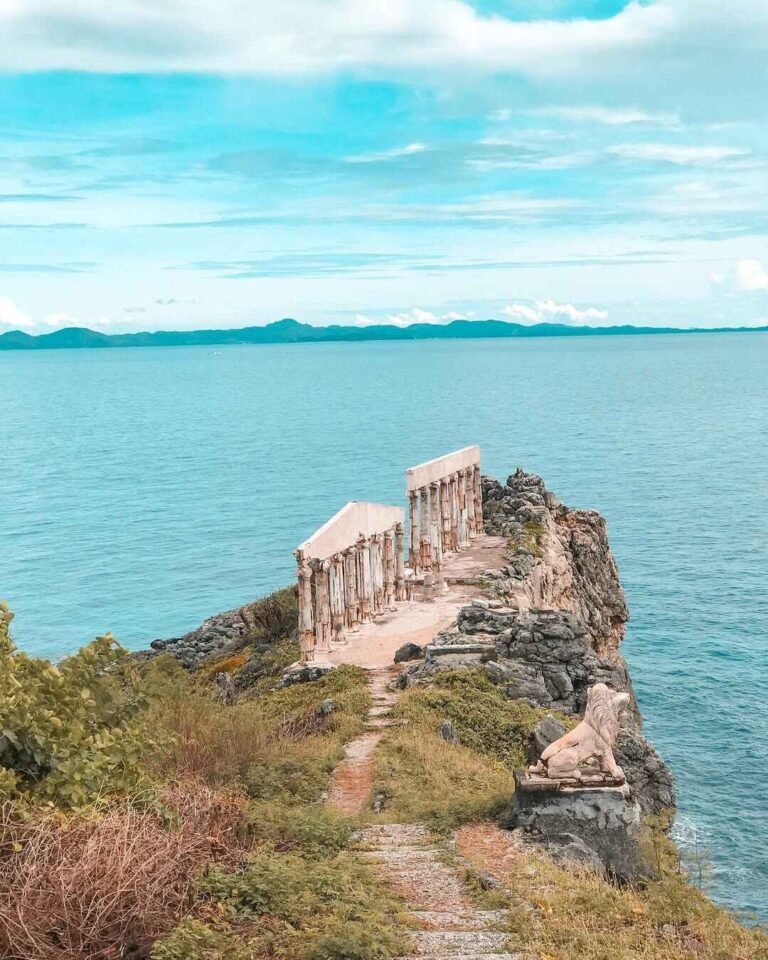
18. Siquijor – Mystical Island of Fire
Shrouded in legend, Siquijor is often called the “Mystical Island of Fire” for its folklore of healers and fireflies glowing at dusk. Beyond the myths, the island offers breathtaking natural beauty. Cambugahay Falls, with its turquoise cascades and rope swings, is a must for adventure lovers. The cliff-jumping experience at Salagdoong Beach gives adrenaline seekers a thrill, while white sand stretches invite relaxation.
Siquijor is also known for its centuries-old churches and Spanish-era convents, reflecting its rich heritage. Travelers curious about local traditions can explore folk healing practices, particularly during Holy Week.
Best Time to Visit: March to May for sunny weather or during festivals for cultural immersion.
How to Get There: Ferries from Dumaguete (1–2 hours) or Bohol make it accessible.
Fees: Cambugahay Falls entry (₱20), Salagdoong Beach entrance (₱30).
As a Siquijor tourist spot, it captivates with its combination of mysticism, beaches, and waterfalls. Far from the crowds, it offers a unique experience that earns it a well-deserved place in the top 20 tourist destination in the Philippines.

17. Bicol Region – Mayon & Whale Sharks
The Bicol Region is home to the iconic Mayon Volcano, renowned for its perfect cone shape. Visitors can admire its beauty at the Cagsawa Ruins, where church remnants stand as a reminder of the 1814 eruption. For those seeking adventure, ATV rides at the volcano’s foothills provide a thrilling experience.
Equally famous is Donsol, the best spot to swim with gentle whale sharks between November and June. Unlike commercialized interactions, Donsol promotes eco-friendly whale shark tourism, ensuring a responsible experience. Adding to the charm are local delicacies like Bicol Express and laing, dishes infused with chili and coconut milk.
Best Time to Visit: November–May for whale sharks; December–April for clear Mayon views.
How to Get There: Flights to Legazpi Airport from Manila or Cebu; vans and buses connect provinces.
Fees: Whale shark tour fees (₱3,500 per boat); Cagsawa entry (₱20).
A Bicol tourist spot offers both nature and culture, from volcano landscapes to marine adventures. This unique blend places Bicol firmly among the top 20 tourist destination in the Philippines, appealing to thrill-seekers and cultural explorers alike.
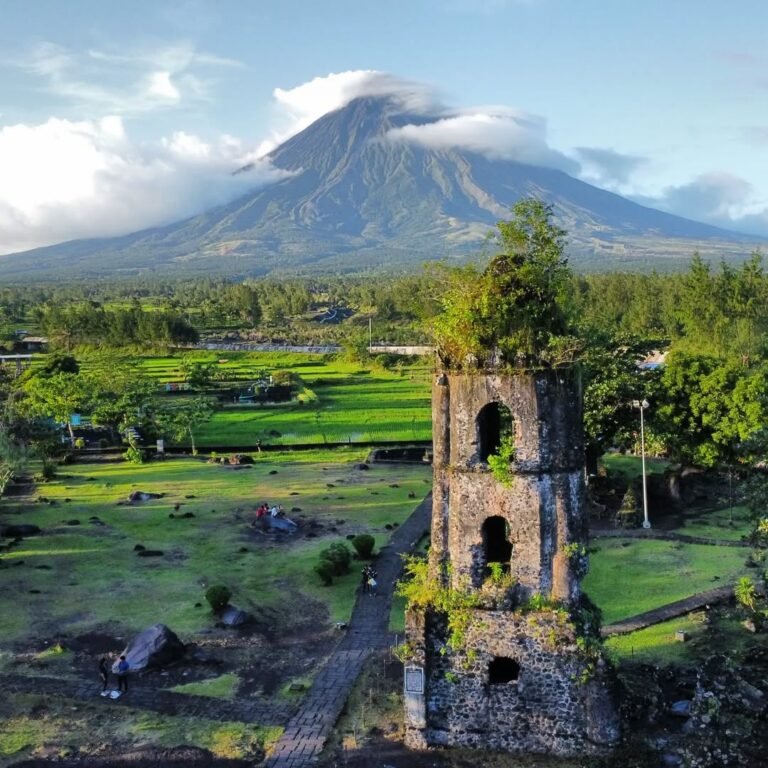
16. Iloilo – Heritage & Dinagyang Festival
Known as the “Heart of the Philippines,” Iloilo is a cultural treasure combining heritage, cuisine, and island escapes. A highlight is the Miag-ao Church, a UNESCO World Heritage Site with intricate Baroque architecture. The city also boasts a thriving food scene, with the iconic La Paz Batchoy, a hearty noodle soup, leading the way. For island adventures, travelers can head to the Gigantes Islands, famous for raw natural beauty, secluded beaches, and limestone cliffs.
The city comes alive every January during the Dinagyang Festival, a grand celebration honoring the Santo Niño with street dancing and elaborate costumes.
Best Time to Visit: January for Dinagyang or November–May for island-hopping.
How to Get There: Flights to Iloilo International Airport are available from Manila, Cebu, and other major hubs. Buses and vans connect to surrounding provinces.
Fees: Miag-ao entry (₱50), Gigantes boat tours (₱1,500–₱2,000).
As a tourist destination in Iloilo, it blends history, gastronomy, and festivals, securing its place in the top 20 tourist destination in the Philippines and making it a must-visit Philippines cultural destination.

15. Coron – Lakes & Wreck Diving
Located in northern Palawan, Coron is world-renowned for its stunning lakes, lagoons, and diving spots. Kayangan Lake, often called the cleanest lake in Asia, is surrounded by towering limestone cliffs and crystal-clear waters. Equally captivating is Twin Lagoon, where salt and fresh waters merge in a surreal swimming experience.
For divers, Coron is a dream come true, with WWII shipwrecks resting beneath the sea, now transformed into coral-encrusted dive sites. Even non-divers can enjoy vibrant reefs on snorkeling trips to Siete Pecados.
Best Time to Visit: December to May for dry, sunny weather and calm seas.
How to Get There: Fly from Manila or Cebu to Busuanga Airport, then take a van to Coron town (30–45 minutes). Boat tours are the best way to explore the lagoons and wrecks.
Fees: Environmental fee (₱200), Kayangan Lake entry (₱300), boat tours range from ₱1,500–₱2,000.
With its mix of natural beauty and underwater history, Palawan diving spot adventures in Coron make it a standout in the top 20 tourist destination in the Philippines.
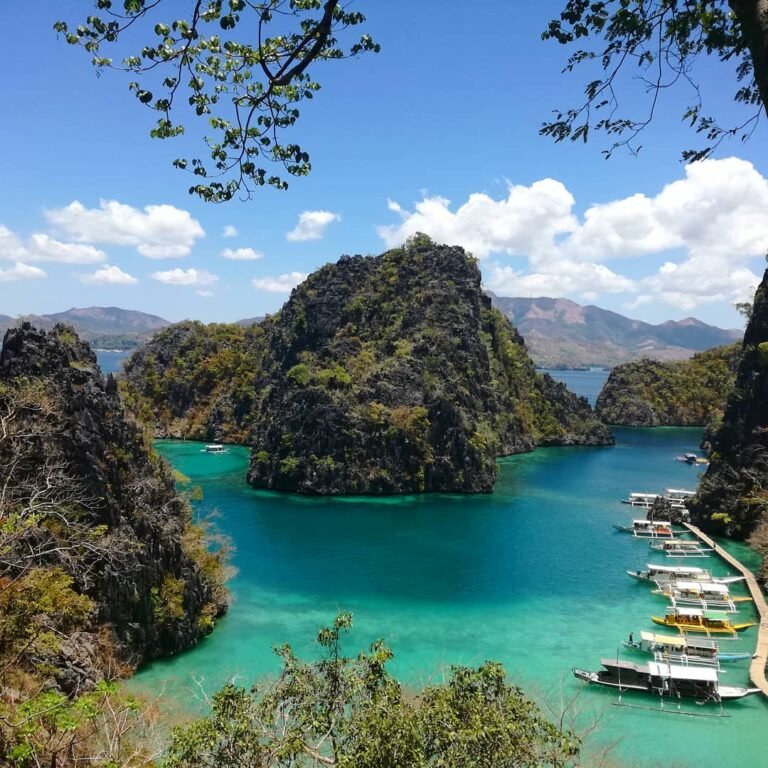
14. Camiguin – Island Born of Fire
Dubbed the “Island Born of Fire,” Camiguin is a volcanic paradise shaped by dramatic eruptions. Despite being the second smallest province, it packs a wealth of attractions. The White Island sandbar, a shifting stretch of powdery sand with panoramic views of Mount Hibok-Hibok, is its crown jewel. Nearby, the haunting Sunken Cemetery, marked by a large cross rising from the sea, tells a tale of a village buried by volcanic activity in the 1870s.
Adventure seekers can hike Mt. Hibok-Hibok or soak in the island’s hot and cold springs. The Lanzones Festival, held every October, celebrates Camiguin’s sweet tropical fruit with street dancing and feasts.
Best Time to Visit: March–May for clear skies or October for the Lanzones Festival.
How to Get There: Flights from Manila or Cebu connect to Camiguin Airport. Alternatively, ferries travel from Cagayan de Oro.
Fees: White Island boat transfer (₱500 per boat); Sunken Cemetery snorkeling fee (₱50).
With its mix of history, adventure, and culture, Camiguin tourist guide journeys reveal why this island remains one of the top 20 tourist destination in the Philippines.
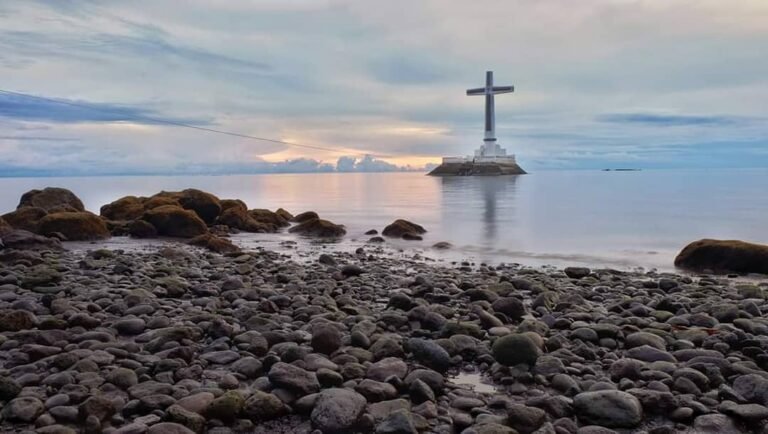
13. Dumaguete – Apo Island & Gentle People
Nicknamed the “City of Gentle People,” Dumaguete is a laid-back Philippines tourist destination beloved by divers, backpackers, and cultural travelers alike. Just off its coast lies Apo Island, one of the country’s premier marine sanctuaries, where sea turtles glide gracefully among vibrant coral reefs.
Back in the city, the scenic Rizal Boulevard is the perfect place for leisurely walks by the sea, while Silliman University, one of Asia’s oldest institutions, adds academic charm to the cityscape. Nature lovers can also explore the Twin Lakes of Balinsasayao and Danao, a tranquil escape in the mountains.
Best Time to Visit: November to May for good diving visibility and calm seas.
How to Get There: Dumaguete Airport connects via Manila and Cebu flights. Ferries also arrive from Cebu and Bohol.
Fees: Apo Island marine sanctuary fee (₱100) and boat transfers (₱3,000 for groups).
Blending marine adventures with small-city warmth, Dumaguete travel spot highlights both natural wonders and friendly locals, securing its reputation in the top 20 tourist destination in the Philippines.
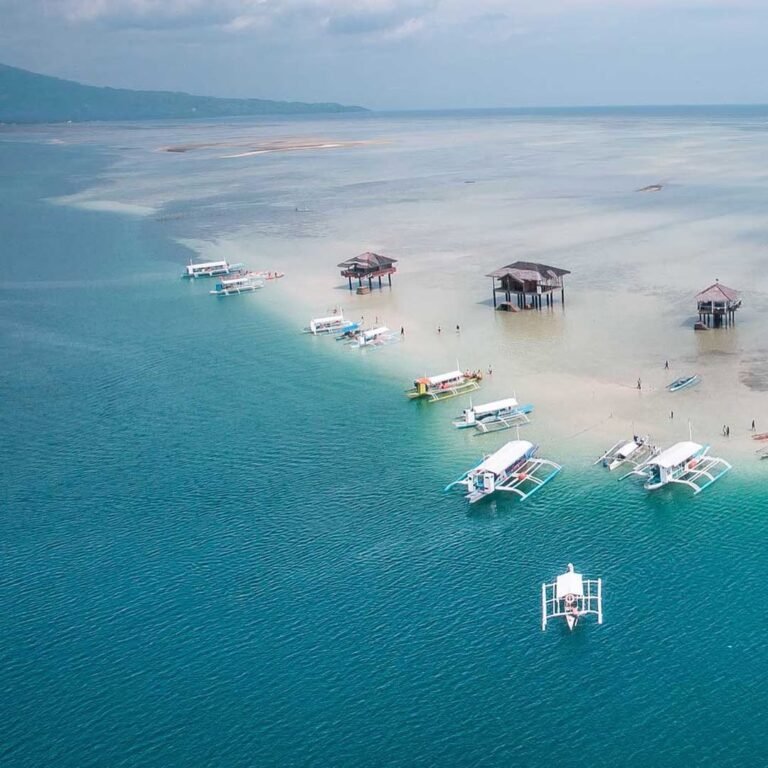
12. Pampanga – Culinary & Adventure
Known as the Culinary Capital of the Philippines, Pampanga tempts foodies with iconic dishes like sisig, a sizzling pork delicacy that has earned global fame. Food tours across Angeles City introduce visitors to Kapampangan specialties—from exotic fare like betute (stuffed frog) to hearty bringhe (local paella). December is a magical time to visit, thanks to the Giant Lantern Festival in San Fernando, where massive, glowing lanterns light up the night.
For adventure seekers, Pampanga is also the gateway to Mt. Pinatubo, where treks lead to a stunning crater lake formed after the 1991 eruption. Off-road 4×4 rides across lahar fields add thrill to the journey.
Best Time to Visit: December for the lantern festival or January–April for clear trekking weather.
How to Get There: Clark International Airport receives both domestic and international flights. Buses from Manila reach Pampanga in 1–2 hours.
Fees: Pinatubo trek packages range from ₱2,500–₱3,000 per person.
From rich flavors to volcanic adventures, Pampanga food travel and outdoor activities prove why it’s a must-visit in the top 20 tourist destination in the Philippines.

11. Batanes – Rolling Hills & Stone Houses
The northernmost province of the Philippines, Batanes is a dreamlike landscape of rolling hills, rugged cliffs, and centuries-old stone houses. Often called the “Scotland of the East,” it offers unmatched scenery at spots like Marlboro Country and Vayang Rolling Hills, where green pastures meet the endless blue of the Pacific. The villages of Sabtang Island, with their traditional Ivatan stone houses, provide a glimpse of resilience against the harsh climate. Unique to Batanes are the Honesty Coffee Shops, where locals trust visitors to pay without supervision—a symbol of the Ivatan people’s integrity.
Best Time to Visit: March to June for calmer seas and good weather.
How to Get There: Flights from Manila or Clark to Basco Airport. Boat rides connect Basco to Sabtang and Itbayat.
Fees: Environmental fee (~₱350) applies to all visitors.
For travelers seeking serenity and authenticity, Batanes travel guide experiences stand apart. From breathtaking landscapes to a culture rooted in simplicity and honesty, it rightfully belongs in the top 20 tourist destination in the Philippines.
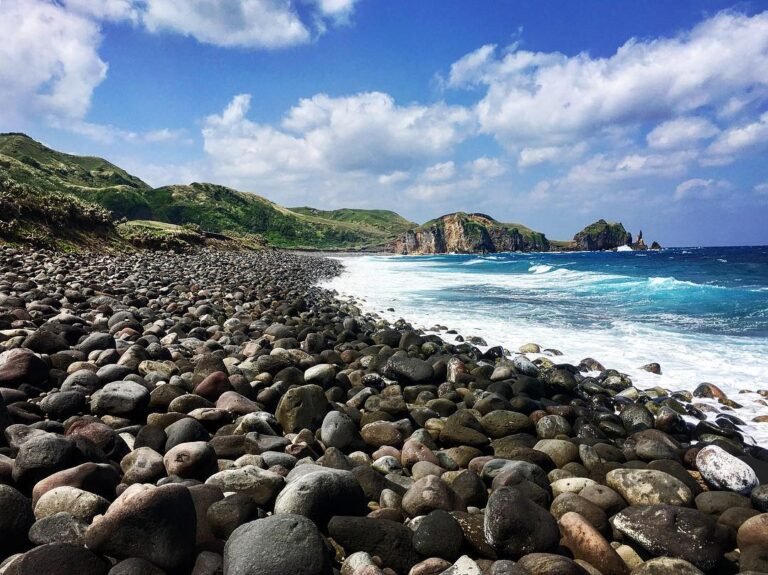
10. Sagada – Hanging Coffins & Caves
High in the Mountain Province, Sagada is a mystical Philippines tourist destination celebrated for its cool climate, rich traditions, and stunning landscapes. Its most iconic attraction is the Hanging Coffins of Echo Valley, a unique burial practice that reflects ancient Igorot beliefs. Adventure seekers can explore the Sumaguing Cave, filled with dramatic rock formations, or trek to Bomod-ok Falls, a majestic cascade surrounded by rice terraces.
One of the most magical experiences in Sagada is witnessing the sea of clouds at Kiltepan Viewpoint, where sunrise paints the mountains in golden hues. The town itself offers a laid-back vibe, with cafés serving mountain coffee and small shops selling woven handicrafts.
Best Time to Visit: November to February for cool weather, though the town is beautiful year-round.
How to Get There: Buses from Manila to Baguio (5–6 hours), then a 5-hour ride to Sagada.
Fees: Environmental fee (₱50), cave guide fees (₱800 per group).
As a unique Sagada tourist spot, it blends culture, adventure, and spirituality, making it an unforgettable stop in the top 20 tourist destination in the Philippines.
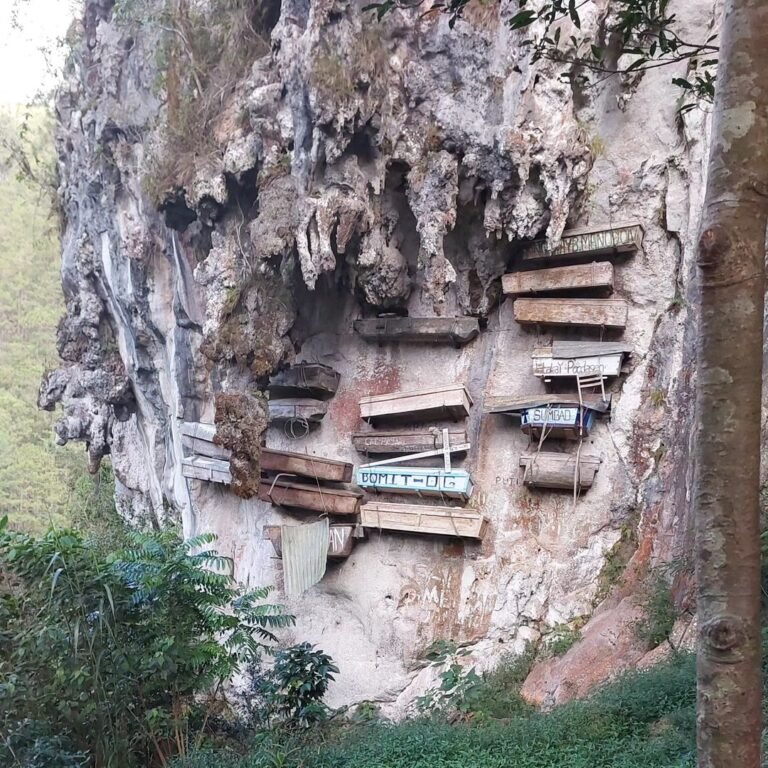
9. Davao City – Mt. Apo & Eagles
Davao City, the largest city in Mindanao, is a diverse Philippines tourist destination known for its balance of urban development and natural wonders. It is the gateway to Mount Apo, the country’s highest peak at 2,954 meters, offering challenging treks and breathtaking views. For wildlife enthusiasts, the Philippine Eagle Center provides an up-close encounter with the endangered national bird, the Philippine Eagle.
Not far from the city lies Samal Island, famous for pristine beaches and luxury resorts like Pearl Farm. Within the city, the Davao Crocodile Park and vibrant food markets add variety to the travel experience.
Best Time to Visit: March, during the Araw ng Dabaw Festival, or August, when the Kadayawan Festival celebrates the region’s harvest and indigenous culture.
How to Get There: Direct flights from Manila, Cebu, and international cities connect to Davao International Airport.
Fees: Philippine Eagle Center (~₱150), Mount Apo trek (₱1,500–₱2,000 with guides), Samal Island resorts vary.
As a Mindanao tourist spot, Davao City offers adventure, culture, and relaxation in one destination, justifying its inclusion in the top 20 tourist destination in the Philippines.
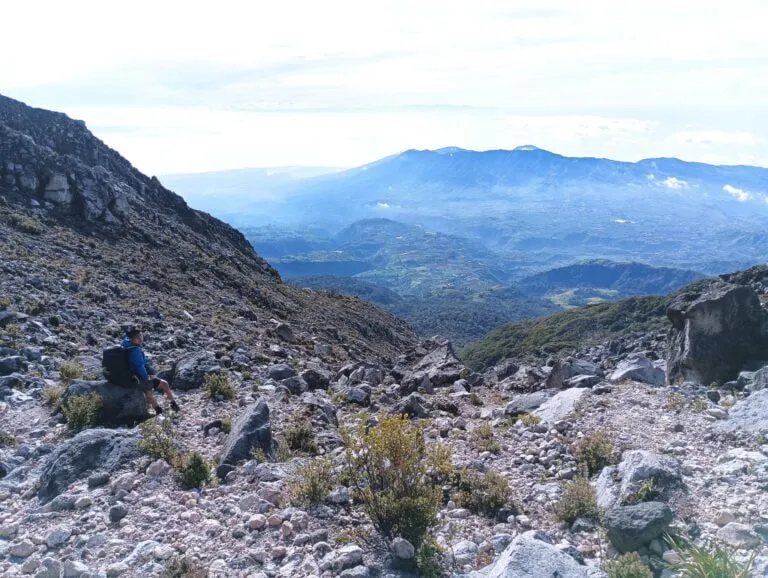
8. Vigan – Spanish Colonial Charm
A UNESCO World Heritage Site, Vigan is a cultural tourist spot in the Philippines that transports visitors back to the Spanish colonial era. Its most famous attraction, Calle Crisologo, is lined with centuries-old houses, cobblestone streets, and horse-drawn carriages. At night, the street glows under warm lantern lights, creating an old-world atmosphere perfect for strolling.
Beyond its heritage charm, Vigan offers immersive cultural experiences. Visit the Syquia Mansion Museum to learn about local history, or the Pagburnayan pottery workshops, where artisans demonstrate traditional jar-making. The local cuisine is also a highlight—don’t miss the famous Vigan longganisa (garlic sausage) and empanada.
Best Time to Visit: November to April for cool, dry weather, and during the Viva Vigan Festival in May for cultural celebrations.
How to Get There: Buses from Manila take about 8–10 hours. Alternatively, fly to Laoag and travel 2 hours by land.
Fees: Walking around Calle Crisologo is free; museum entries cost around ₱50–₱100.
As a Philippines tourist destination rich in heritage and flavor, Vigan preserves colonial elegance and cultural pride, making it a must-see in the top 20 tourist destination in the Philippines.

7. Banaue & Batad Rice Terraces – UNESCO Heritag
The rice terraces in the Philippines, carved into the mountains of Ifugao more than 2,000 years ago, are a living testament to ancient engineering. The Banaue Rice Terraces, often called the “Eighth Wonder of the World,” and the more secluded Batad Rice Terraces, shaped like an amphitheater, offer breathtaking scenery that blends nature and culture. These terraces are still farmed by local Ifugao people, preserving traditions passed down through generations.
Visiting Banaue or Batad is not just about the view—it’s an immersive cultural experience. Trekking through the terraces reveals waterfalls, mountain villages, and homestays where visitors can share stories and meals with locals. The planting (June–July) and harvest seasons (October–November) showcase the terraces at their most vibrant.
Best Time to Visit: Dry months (December to May) are ideal for trekking, but harvest season offers stunning golden landscapes.
How to Get There: Overnight buses from Manila reach Banaue in 9–10 hours. From there, jeepneys and trekking trails lead to Batad.
Fees: Environmental fee (₱50) and guide fees (₱1,200 per trek).
As one of the most meaningful Philippines tourist destination, the rice terraces highlight cultural resilience, ensuring their place in the top 20 tourist destination in the Philippines.
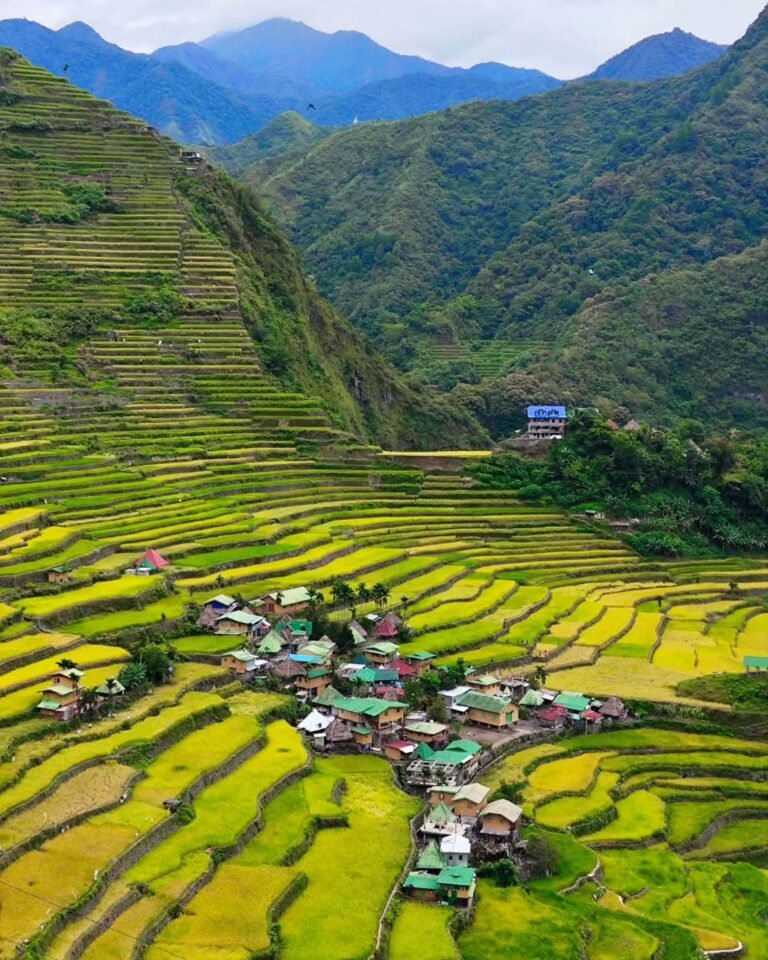
6. Siargao – Surf & Island Life
Known as the “Surfing Capital of the Philippines,” Siargao has grown into a world-class Philippines tourist destination. Its most famous attraction is Cloud 9, a powerful surf break that draws international surfers every season. But Siargao is more than just waves. The island is also home to the Magpupungko Rock Pools, natural tidal pools perfect for swimming when the tide recedes. For a quieter adventure, visitors can kayak or paddleboard across the turquoise waters of Sugba Lagoon, surrounded by lush mangroves.
Beyond the attractions, Siargao offers an island lifestyle of simplicity—motorbike rides on coconut-fringed roads, friendly locals, and small cafés serving fresh seafood and smoothie bowls.
Best Time to Visit: Surf season peaks from August to November, while March to May is ideal for calm waters and island-hopping.
How to Get There: Daily flights connect Manila and Cebu to Siargao’s Sayak Airport. Boat connections via Surigao City are also available.
Fees: Environmental fee (₱20) applies, plus minimal entrance fees for Magpupungko (₱50) and Sugba Lagoon (~₱100).
Whether you’re here to chase waves or embrace the island’s slow pace, Siargao surf culture and natural beauty secure its spot in the top 20 tourist destination in the Philippines.
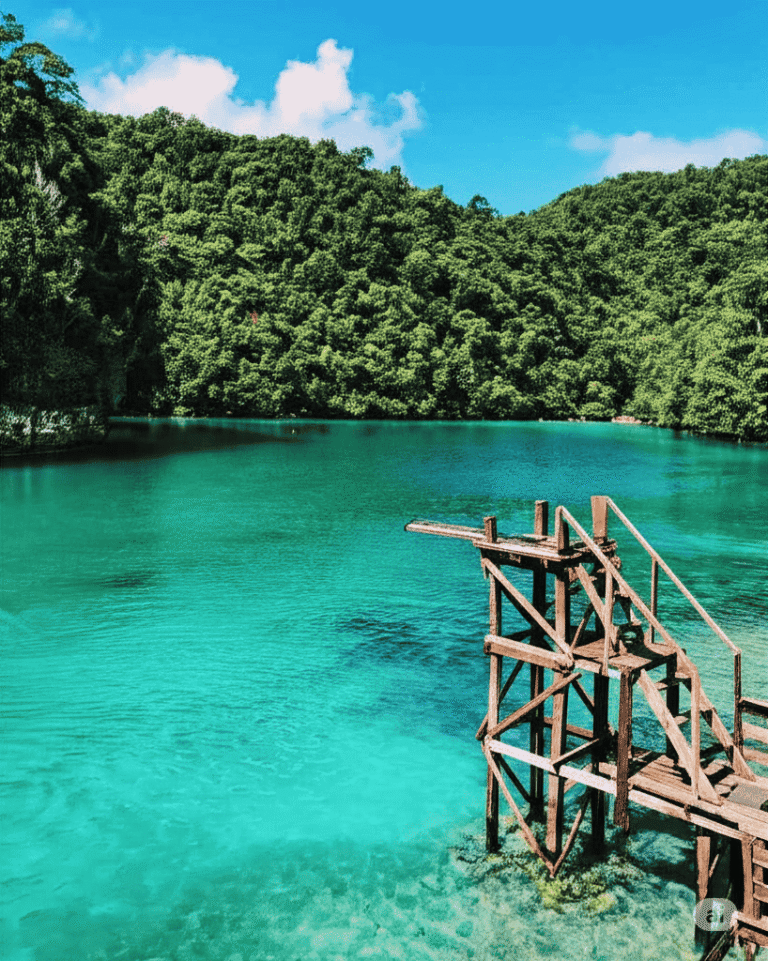
5. Manila – Culture & History
Manila, the bustling capital, is often the first stop for travelers and a tourist destination in Manila that offers both history and modern culture. The walled city of Intramuros is its centerpiece, where cobblestone streets lead to landmarks like Fort Santiago and San Agustin Church, a UNESCO World Heritage site. Nearby, Rizal Park (Luneta) honors national hero José Rizal and provides a green respite in the city.
Beyond history, Manila’s food and cultural scene is just as vibrant. In Binondo, the world’s oldest Chinatown, visitors can indulge in authentic dim sum, noodle houses, and local street food. The city also boasts excellent museums such as the National Museum of Fine Arts and the National Museum of Natural History, both with free admission. For modern flair, explore Makati’s art galleries, Bonifacio Global City’s nightlife, or shop in massive malls like Mall of Asia.
Best Time to Visit: December to May, when the weather is dry and pleasant.
How to Get There: Fly into Ninoy Aquino International Airport (NAIA), the main gateway to the country.
Fees: Intramuros walking is free, Fort Santiago (~₱75), National Museums are free.
As one of the most important Philippines tourist destination, Manila bridges past and present, securing its spot in the top 20 tourist destination in the Philippines.

4. Bohol – Chocolate Hills & Panglao
Bohol is one of the most fascinating Philippines tourist destination, famous for its unique natural and cultural treasures. The island’s most iconic attraction is the Chocolate Hills, a surreal landscape of over 1,200 grass-covered mounds that turn brown during the dry season, resembling rows of chocolate kisses. Just as iconic are the Philippine tarsiers, tiny primates with enormous eyes, found in sanctuaries that protect these endangered creatures.
Beyond its inland attractions, Bohol offers scenic adventures along the Loboc River, where visitors can take a floating restaurant cruise with local music. On the coast, Panglao Island boasts white-sand beaches, crystal-clear waters, and vibrant dive sites like Balicasag Island, teeming with turtles and coral gardens. Historic landmarks such as Baclayon Church and the Blood Compact Shrine add cultural depth to any trip.
Best Time to Visit: December to May for dry weather and brown-colored Chocolate Hills.
How to Get There: Fly directly to Bohol–Panglao International Airport or take a fast ferry from Cebu (2 hours).₱150), Tarsier Sanctuary (
Fees: Chocolate Hills viewing deck (₱60), Loboc River cruise (₱600 with buffet).
As a Bohol tourist destination, it offers a perfect mix of nature, wildlife, beaches, and history, making it a highlight in the top 20 tourist destination in the Philippines.
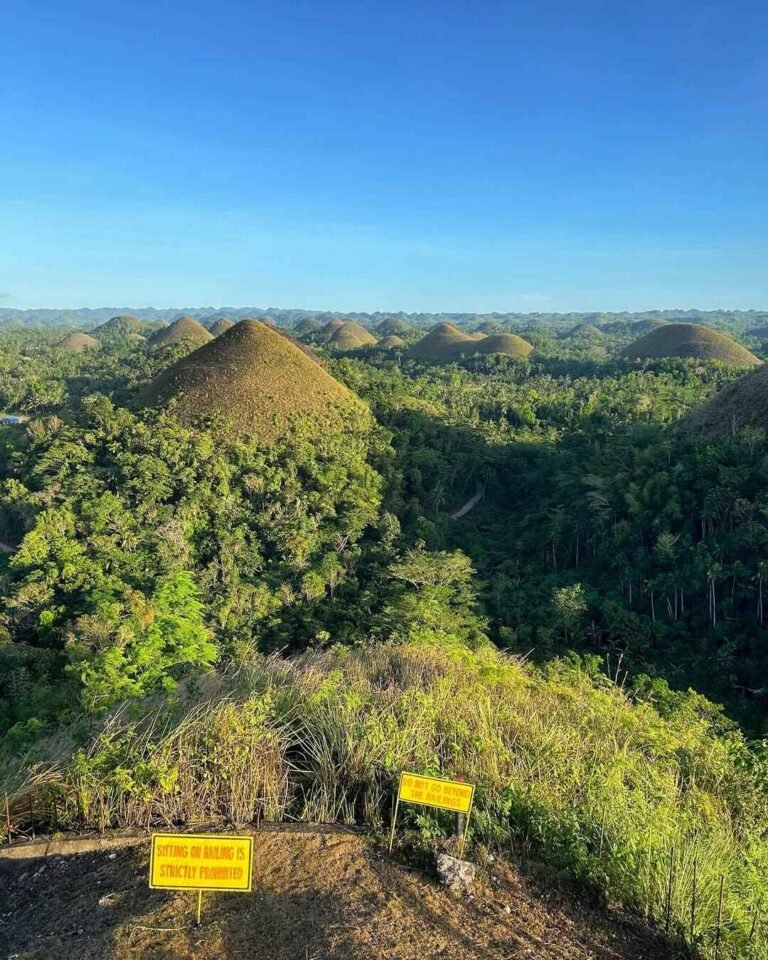
3. Cebu – History & Adventure
Cebu, known as the “Queen City of the South,” is a dynamic tourist destination in Cebu that blends history, urban life, and outdoor adventure. In Cebu City, you’ll find important landmarks like Magellan’s Cross, the Basilica Minore del Santo Niño, and Fort San Pedro, tracing the roots of Christianity in the Philippines. Just outside the city, modern malls, lively markets, and vibrant nightlife await.
For nature lovers, Cebu offers stunning adventures. In the south, Kawasan Falls in Badian is famous for canyoneering – leaping into turquoise pools as you trek through river gorges. In Oslob, swimming with whale sharks is a once-in-a-lifetime experience. On the western coast, Moalboal is known for its sardine run, a massive underwater spectacle of shimmering fish. The island also offers mountain views from Osmeña Peak and quiet escapes in northern islands like Malapascua, popular with divers.
Best Time to Visit: November to April for dry weather and festivals like Sinulog in January.
How to Get There: Fly into Mactan–Cebu International Airport, with daily connections from Manila and international hubs.
Fees: Fort San Pedro (₱30), Kawasan Falls (₱45), canyoneering (₱1,500), Oslob whale shark tours (₱1,000).
As a top Cebu tourist destination, it appeals to both history enthusiasts and thrill seekers, making it a standout in the top 20 tourist destination in the Philippines.
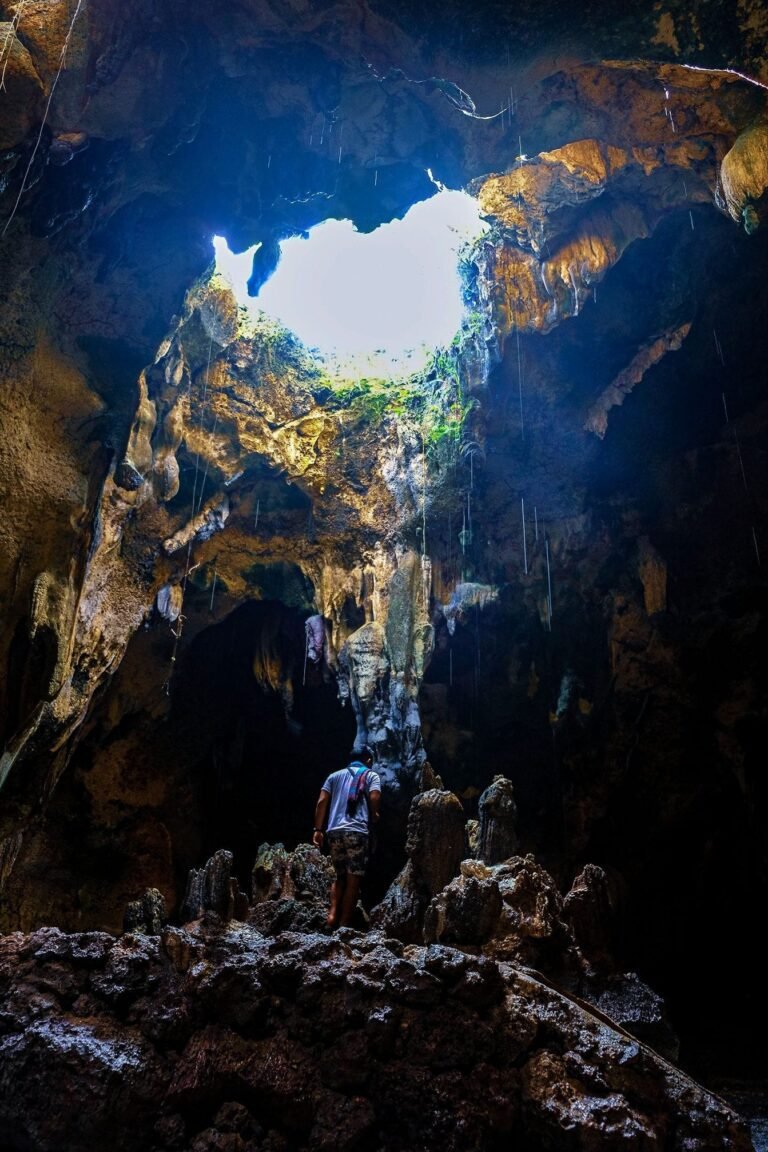
2. Palawan – El Nido, Coron & Puerto Princesa
Palawan, often called the “Last Frontier,” is a breathtaking tourist destination in Palawan and one of the crown jewels of Southeast Asia. Its beauty lies in diversity: the UNESCO-listed Puerto Princesa Underground River, the limestone karst lagoons of El Nido, and the world-class wreck diving sites of Coron. El Nido enchants with towering cliffs and hidden lagoons where you can kayak or swim in emerald waters. Coron, meanwhile, is paradise for divers, home to vibrant reefs and historic Japanese shipwrecks from World War II. Puerto Princesa balances the adventure with city comforts and the magical underground river experience.
Best Time to Visit: December to May, the dry season with calm seas.
How to Get There: Direct flights from Manila or Cebu connect to Puerto Princesa, El Nido, and Busuanga (for Coron). Boats also link El Nido and Coron.
Fees: El Nido and Coron have eco-tourism fees (~₱200), plus specific site fees for lagoons and lakes. Underground River tours cost around ₱500, often bundled in packages.
What makes Palawan a premier Philippines tourist destination is its untouched landscapes that rival the world’s most beautiful islands. Whether you’re an adventurer, diver, or simply a beach lover, Palawan’s mix of natural wonders ensures its place in the top 20 tourist destination in the Philippines.
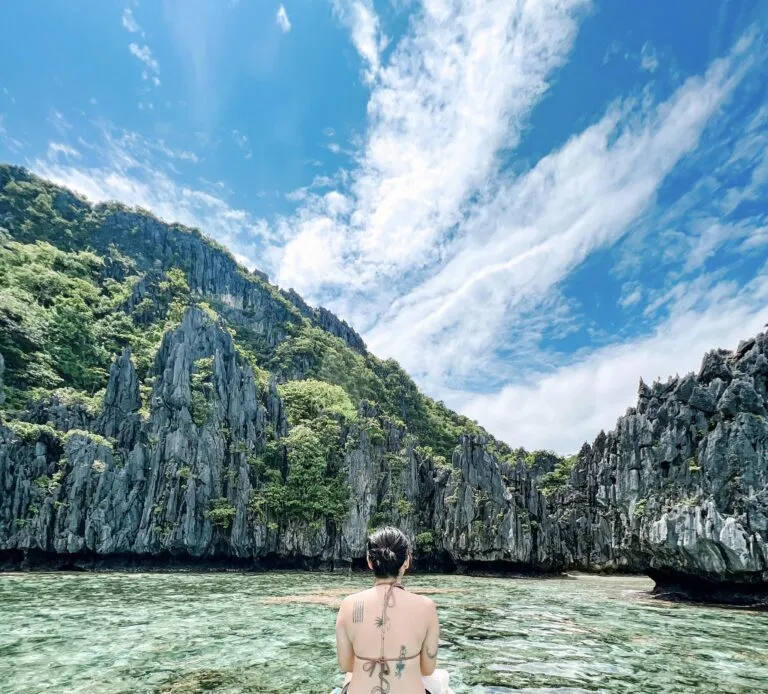
1. Boracay Island – White Beach & Nightlife
Boracay is one of the most iconic Philippines tourist destination, consistently ranked among the best islands in the world. Its crown jewel is White Beach, a 4-kilometer stretch of powdery sand and crystal-clear waters that captivates visitors year after year. Beyond lounging on the shore, Boracay offers an exciting mix of activities: parasailing, kiteboarding, scuba diving, and sunset sailing on a paraw boat. When the sun sets, the island transforms into a lively hub of beach bars, fire dances, and world-class restaurants, making it a complete getaway.
Best Time to Visit: December to May, when the skies are clear and seas are calm.
How to Get There: Fly to Caticlan (closest) or Kalibo Airport, then transfer via land and boat to Boracay.
Fees: Travelers must pay an environmental fee (₱150) and terminal fee (₱150) at the Caticlan Jetty Port, aside from boat fare.
As a Boracay tourist spot, it offers a balance of relaxation and nightlife that suits both families and young travelers. Whether you’re chasing sunsets or simply lying on soft white sand, Boracay remains a must-see in the top 20 tourist destination in the Philippines.
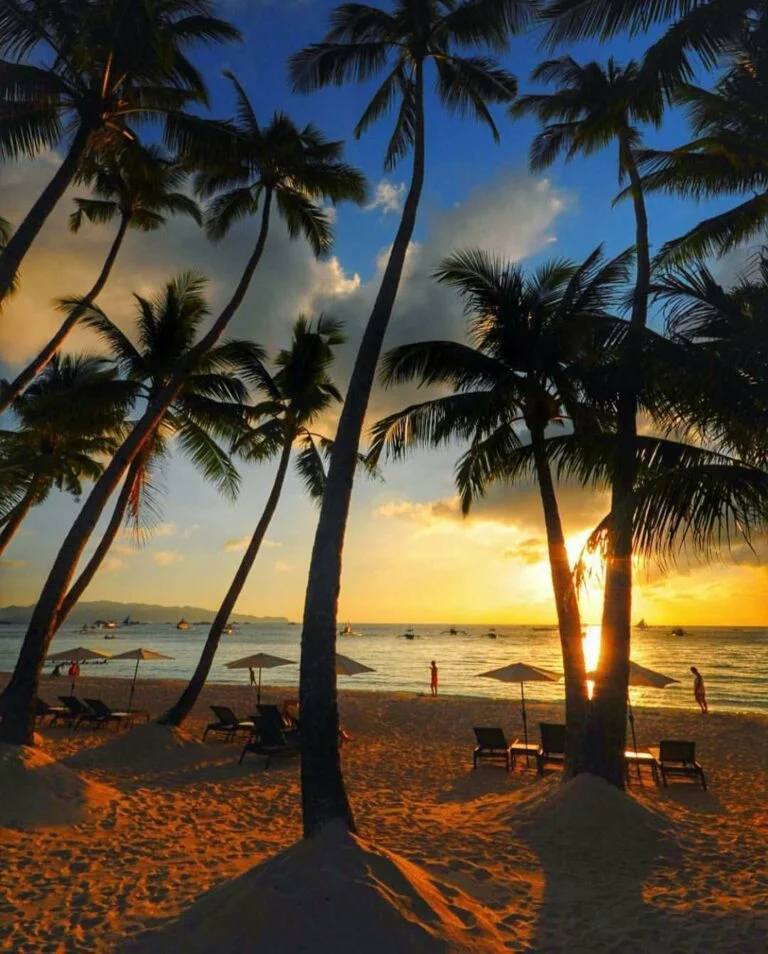
III. Travel Tips for Exploring the Top 20 Destinations
Traveling around the Philippines is exciting but can also be overwhelming if you don’t plan wisely. Whether you’re visiting for a week or exploring long-term, these Philippines tourist destination travel tips will help you save money, stay safe, and enjoy every stop.
Budget Travel Hacks
DIY tours are often cheaper than packaged deals. For example, in Palawan or Cebu, you can book island-hopping tours directly with local boatmen at lower rates. Public transport—jeepneys, tricycles, and buses—is an affordable way to get around, though it may take longer. Eating at carinderias (local eateries) instead of tourist restaurants will also stretch your budget while letting you try authentic Filipino dishes.
Safety & Seasonal Tips
The best time to visit tourist spots in the Philippines is during the dry season (November to May). Be mindful of the rainy season (June to October), when typhoons may disrupt travel. Always keep a waterproof bag for essentials. In busy cities like Manila or Cebu, stay alert to avoid common scams like overpriced taxis—use Grab or official transport terminals when possible.
Sustainable Travel Reminders
Help preserve the country’s beauty by minimizing single-use plastics, respecting wildlife, and following “leave no trace” practices, especially in ecotourism destinations like Bohol, Batanes, and Siargao. Supporting community-based tourism initiatives also ensures that locals benefit directly from your visit.
By planning ahead and traveling responsibly, you’ll not only save money but also create more meaningful connections with each Philippines tourist destination you explore.
IV. Conclusion – Why the Philippines Belongs on Your Travel List
The Philippines is more than just a tropical getaway—it is a country where every journey reveals a new story. From the white sands of Boracay to the mystical highlands of Sagada, from the coral gardens of Apo Island to the timeless streets of Vigan, the top 20 tourist destination in the Philippines showcase the nation’s incredible diversity. Beaches, mountains, heritage towns, and bustling cities all offer their own reasons to fall in love with this archipelago.
Yet, what makes these places truly special is the blend of natural wonders and warm Filipino hospitality. Each must-visit Philippines tourist destination offers more than scenic views—it invites travelers to experience culture, traditions, and adventures unique to every region. Whether you are chasing sunsets, sampling local delicacies, or trekking ancient rice terraces, there is always something beyond the usual tourist trail waiting to be discovered.
As you plan your own adventure, consider crafting a personalized itinerary that goes beyond the mainstream. Mix famous landmarks with hidden gems, balance relaxation with exploration, and always leave space for spontaneous discoveries. The Philippines is not just a destination—it’s a journey of endless possibilities, waiting for you to explore.

